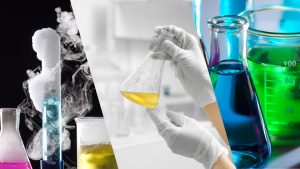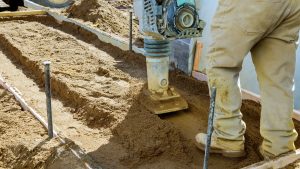Renewable energy is the recommended mode of energy that is safe for the environment. Unlike fossil fuels which are finite, renewable energy depends on natural resources that replenish themselves without exhausting the resources in the world. As one or more natural sources are available in any country in one form or another, adopting renewable energy in each is a real possibility. Some of the most popular types of renewable energy include wind, water, solar and more. Despite this, most countries worldwide depend on fossil fuels which will not only run out in the future but are causing extreme environmental damage, significantly contributing to climate change. However, simply using renewable energy does not cater towards leading a holistic, sustainable life. This article will explain the future of renewable energy and sustainable living.
Future of Renewable Energy
Renewable energy is preferred due to many reasons. In addition to being available globally, renewable energy does not emit emissions or pollutants, opens up more job opportunities, significantly contributes to economic development and is much cheaper. It depends on the energy stored in the Earth’s crust, specifically, the sun, wind and thermal, which currently only accounts for 29 per cent of electricity generation.
According to the International Energy Agency (IEA), the demand for world electricity will be increased by 70 per cent in 2040 with the predicted rise in population. Therefore, countries must look at the future of renewable energy and ensure countries globally transition to such energy sources. Per the Paris Accord signed at the World Climate Summit in 2015, countries pledged to reduce their emissions and maintain them to a temperature below 2 degrees Celsius. In this respect, the International Renewable Energy Agency (IRENA) notes that increasing renewable energy share in electricity generation to 57 per cent worldwide by 2030 will be necessary. Here are some things to expect in the future:
Energy Storage Solutions Will Rise
As implied by the term, energy storage is when energy, specifically renewable energy in this context, is collected and stored in equipment or system to be used later. Such systems must address the fluctuating nature of renewable energy, which nature controls. In other words, while energy provided through fossil fuels offers humans the ability to control it depending on demand, renewable energy does not provide such flexibility. Hence, the purpose of storing energy is to be used when there is a grid outage or power disruption. As a result, companies can continue to conduct business uninterrupted.
There are different forms of storage, ranging from mechanical (pumped hydro storage, flywheel energy storage, and compressed air energy storage), electrochemical (rechargeable battery and flow battery), thermal (capacitor and supercapacitor), electrical and hydrogen-based. Which one is most suited will generally depend on the organisation’s requirements. Most often, wind turbines are used when there is higher energy demand. However, in the future, energy storage systems, especially in the form of batteries, are expected to be a key rid asset, with experts predicting a 30 per cent annually.
Rise of Hybrid Renewable Plants
A trend expected to gain more traction in the future includes the infusion of different unit types in one plant, thereby becoming a hybrid renewable plant. The most popular form of hybrid renewable plant includes a plant that combines solar PV with batteries. This is expected to increase efficiency and offer opportunities for everyone to have a steady energy supply. It is much less expensive as hybrid power plants maximise grid connection points. In other words, companies do not have to invest enormous amounts of money in constructing a grid infrastructure only compatible with one form of renewable energy.
Moreover, hybrid renewable plants offer more flexibility and a feasible option for the engagement of the electricity market and ancillary service markets. Note, however, that the complexity of such systems should not be underestimated. Due to its hybridity, there are different communication systems and integrated technology, and it will require many units to be installed. It is currently implemented in a few countries, specifically in Europe. With the rise in research in this area, hybrid renewable plants are expected to rise.
Solar Receiving More Prominence Than Other Renewables
According to the IEA, solar power is expected to triple over the 2022-2027 period. This would surpass coal, the present largest source of energy in the globe. Solar is a form of renewable energy that draws from the sun. While the sun provides many types of energy, solar photovoltaic system, known as solar PV, is the most common. One reason for the expected surge in solar PV is because it is the most cheapest mode of electricity generation, sometimes lower than fossil fuels. Hence, countries are expected to accelerate the installation of solar panels on residential and commercial rooftops.
Implementing solar panels will massively benefit the public, who would have reduced energy bills. Another form of renewable energy that will grow with solar PV is wind energy. These renewable energies combined will provide over 90 per cent of renewable power in the future. While this was initially a form of renewable power only available to specific industrialised nations, it is expected to be a key renewable energy source in Asia and the rest of the world, providing energy to vehicles, wireless devices and machines.
Expansion of Prosumer Markets
The word ‘prosumer’ is a word that merges producer and consumer. It refers to someone who produces and consumes energy as someone would read and simultaneously use social media platforms to post content. In the energy sector, some people generate their energy from distributed energy resources by installing their solar panels or purchasing an electric vehicle. In other words, in the future, expect more consumers to be interested in investing in renewable energy themselves/ As the main drivers are the public itself, this indicates that people will be more interested in renewable energy. Understanding that the current generations have taken significant leaps in educating the public on the “real” nature of climate change and arguing that the older generation has stolen their future, this is an expected trend that has a practical effect in the foreseeable future.
In countries that have properly implemented this system, proconsumers can sell their solar energy to any consumer in the field. Specific softwares developed allow them to track where the energy is coming from and how much carbon emissions are generated.
The Future Depends on Renewable Energy and Sustainable Practices
Although a country has implemented renewable forms of energy, it does not necessarily mean that the public is henceforth living sustainably. An excellent way to understand what encompasses sustainability is by looking at the Sustainable Development Goals introduced in 2015. There are 17 goals that are meant to be achieved by 2030 vision that 195 countries hope to experience. It envisions a world where “all people are fed, healthy, employed, educated, empowered and thriving”, although it cannot be at the expense of someone else’s life on Earth. Realistic and feasible practices are currently being established, leading the future of renewable energ and sustainability to look good.







